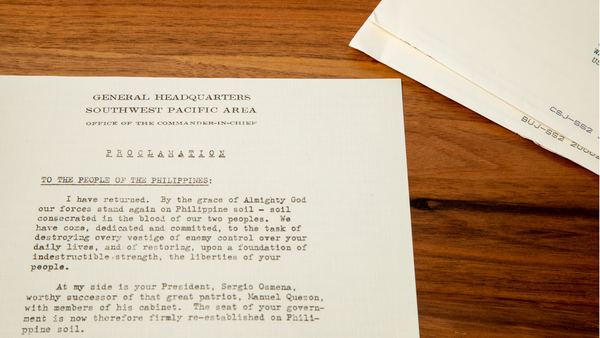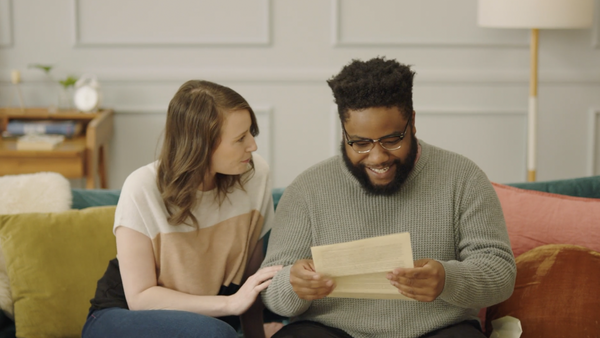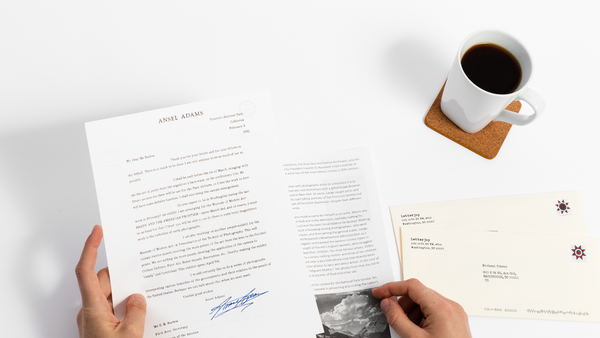


Read Some Past Letterjoy Letters
See a small sample of the letters recently mailed to Letterjoy members.
Letterjoy members get to enjoy letters on a new theme each and every month. With hundreds of different letters mailed, it’s hard to choose just one to represent what we do, so we’re making several of our letters available online.
Series: Nearly a Duel (Download letter)
Authors & Recipients: Alexander Hamilton (to James Monroe) & Ben Franklin (to Dr. Thomas Percival).
Synopsis: This one-month series examined four notable conflicts that seemed destined to end in a duel, but were ultimately resolved in other ways. The first letter in the series, which we’re making available here, features Alexander Hamilton’s near-duel with James Monroe. In a strange twist of fate, it was Aaron Burr, who delivered a mortal wound to Hamilton in a duel years laters, who helped the two make peace and avoid a potentially fatal meeting.
We also include a letter from Benjamin Franklin to the noted medical ethicist Dr. Thomas Percival in which Franklin lays out his thoughts on the practice (He was not a fan). Later in the series, we feature near-duels involving Preston Brooks, Mary Todd and Abraham Lincoln, and George Westinghouse.
Series: Battlefield Signals Innovation (Download Letter)
Author & Recipient: Field Marshall John G. Dill (to General George C. Marshall)
Synopsis: This one-month series traced advances in battlefield communication from Civil-War-era mobile telegraph wagons to encrypted, transatlantic telephony. For this week in the series, we showcased a WWII letter between Field Marshall John Dill, the most senior British officer on the Allied Joint Chiefs of Staff and General George C. Marshall, Chief of Staff of the United States Army, and later Secretary of State and Secretary of Defense to President Truman.
In this letter, Dill pleads with Marshall to give British intelligence officer and mathematician Alan Turing access to a classified telephone system then under development. Turing did eventually gain access to the system, the SIGSALY, and verified its security. Soon the bulky but innovative system was deployed in every theater of the war to help top generals, admirals, and political leaders communicate and plan the war.
We also share a memorandum to Harry Hopkins, President Roosevelt’s confidante and envoy to Prime Minister Churchill, discussing SIGSALY’s London installation and begging Hopkins to urge the Prime Minister not to speak of classified matters by unsecured telephone.
Series: Food & Trade (Download letter)
Author & Recipient: Amy C. Ransome, Chair of the WLA of DC, to her membership.
Synopsis: This one-month series covered four notable moments in the history of the American food supply, from the Sugar Act of 1764 to the 1917 United Fruit Company-instigated coup in Costa Rica. The sample letter shared above discusses the successes of the Women’s Land Army of America (WLA), an entity organized during World War I to solve a massive shortage in farm labor by recruiting, training, and deploying women to work in agriculture.
Our postscript examines the organization’s history and the political forces that led to its demise and explains the surprising reason why one of the WLA’s chief tasks was collecting peach pits.
Series: The Politics of Caffeine (Download Letter)
Author & recipient: Dr. Harvey Washington (HW) Wiley to US Secretary of Agriculture James Wilson
Synopsis: This one-month series explored American politics through the lens of caffeine. The first letter in the series involves the Boston Tea Party & the switch by many “patriots” to coffee. The second examines questions of antitrust and sovereignty as President William Howard Taft’s Administration fights with Brazil over Brazil’s manipulation of global coffee prices.
This letter, the third in the series, was written by Dr. Harvey Washington Wiley, the first head of what we now call the FDA (Food & Drug Administration) to Secretary of Agriculture James Wilson. In his letter, Wiley urges Wilson to seize a cargo load of Coca-Cola and initiate a lawsuit against under the authority recently granted by the Pure Food & Drug Act. Wiley laid out a litany of charges against the beverage brand, including unsanitary production, mislabeling (since the product contained little to no Coca or Cola), and inclusion of a dangerous added ingredient (caffeine, derived from waste tea).
Our postscript examines Wiley’s crusade against “deleterious” added ingredients and deceptive marketing, and his years-long court battle with Coca-Cola over the health of caffeine, and the scope of his regulatory authority.
P.S. for teachers: There is no need to email us any longer. All of the letters on this page may be used in your classroom, free of charge.
Like what you see? Sign up for historic letters today.
Get History's Best Letters By Mail
Find your perfect bundle. Get weekly letters from presidents, famous authors, scientists, and more.
